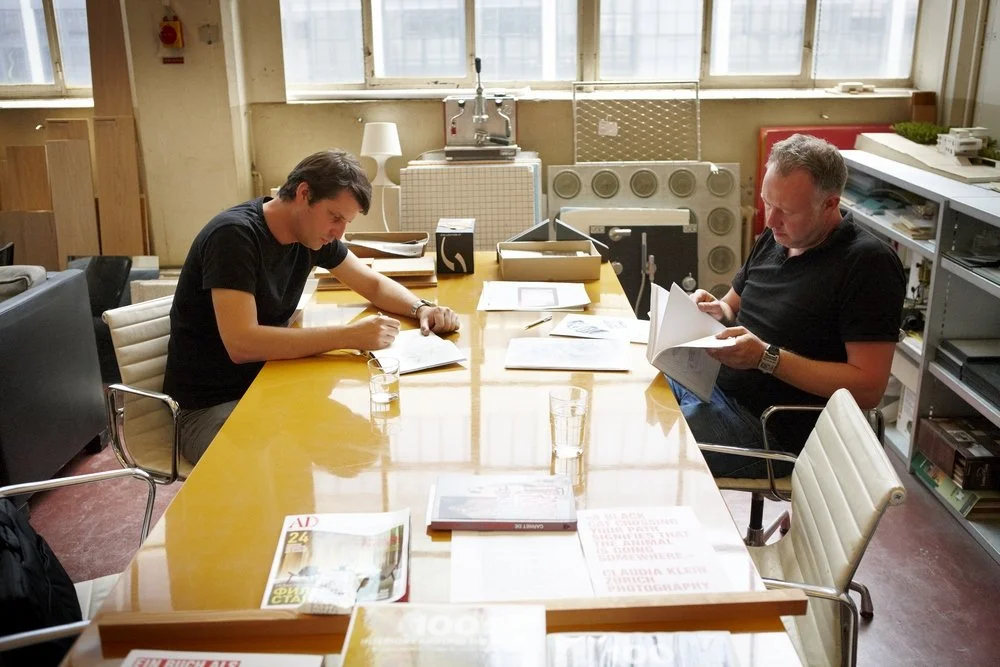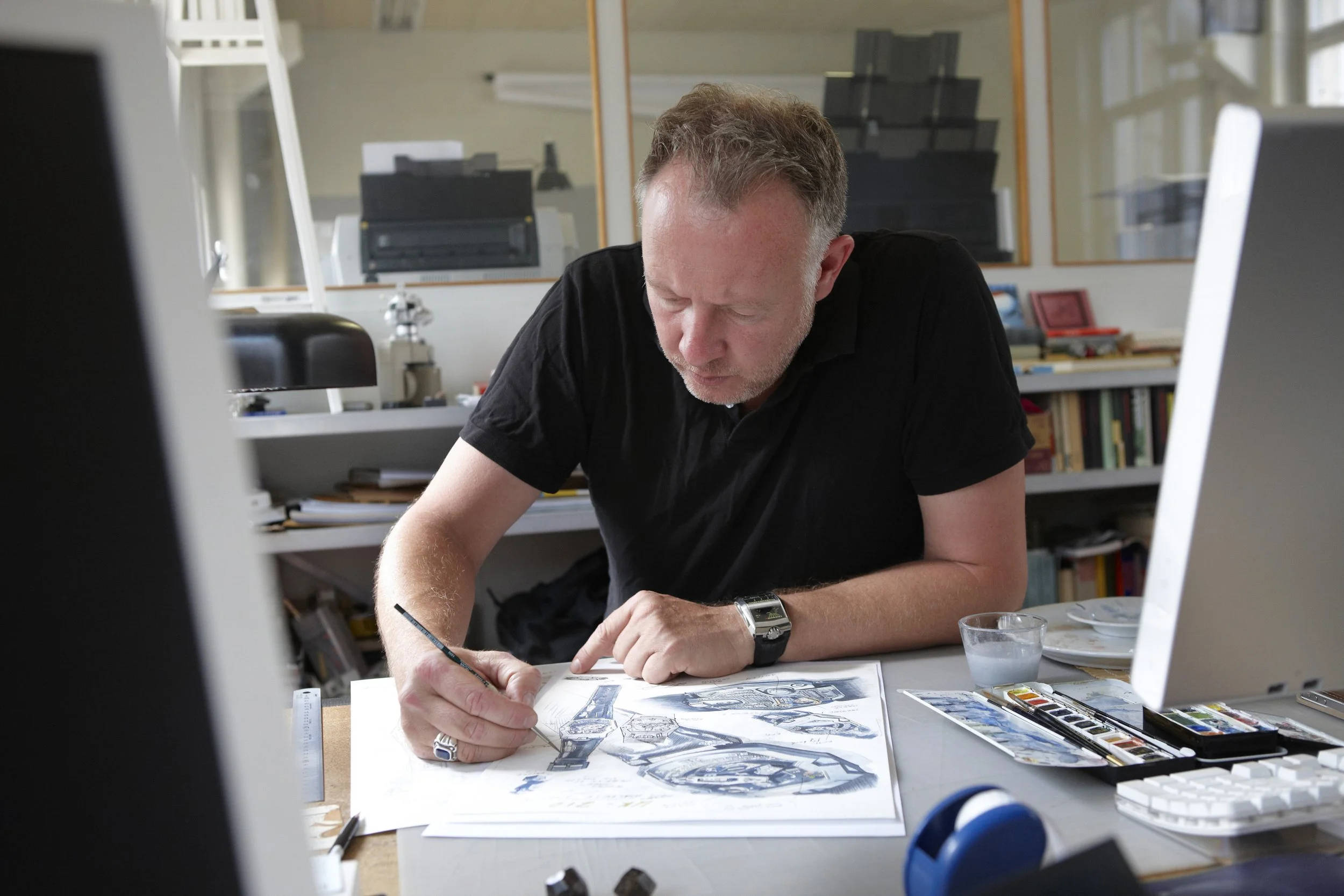Sci-Fi Was Always Personal – A Chat With Urwerk’s Martin Frei
One of the big questions in modern independent watchmaking is, why did watchmaking design and aesthetics shift so abruptly to “sci-fi” in the late 1990s and early 2000s? Why not some other design language? What about sci-fi aesthetics specifically attracted so many like-minded watchmakers, all at the same time?
It’s in this period that we observe a burst of futuristic watchmaking that began with Vianney Halter and Urwerk, and then continued for years to come with Ulysse Nardin’s Freak, the Opus Collection by Harry Winston, and MB&F’s Horological Machine 1.
From a technical perspective, we spoke recently on a similar topic with Jean-François Mojon – the beginnings of avant-garde watchmaking. To get a better grasp on the design and aesthetic side of this period, particularly how and why sci-fi became so dominant as the avant-garde design language in watchmaking, we recently caught up with Martin Frei, visionary designer and co-founder of Urwerk.
Martin and Felix, co-founders of Urwerk
Every conversation with Martin is a journey across watchmaking, art, and literary history. Coming out of art school with a somewhat serendipitous encounter with watchmaking through friends, Martin is an unusual figure in the watchmaking tradition, an outsider inside.
Design is always personal
“The designer’s own mindset/posture [is] an essential part of the design process.” – T. Irwin et al, “Transition Design Provocation.” Design Philosophy Papers
Almost immediately when we began discussing sci-fi, it became clear that Martin is a lifelong fan. “Star Trek was my first encounter with sci-fi. It really was like a confrontation with futuristic ideas when I was a kid,” Martin says. Of course, the late 1970s and 1980s were a golden age for sci-fi entertainment with the arrival of Star Wars, Alien, Tarkovsky’s Stalker, Mad Max – naming only a few from this period. Ultimately, it was all of these films and their accompanied vision for the future that shaped Martin’s aesthetic and design sensibilities.
Martin applying his design sensibilities to the UR-210
There is no designer without their own taste, aesthetic ideals, and cultural influences. In this way, the arrival of sci-fi designs for Urwerk was very much the natural extension of decades of fanfare for science fiction and futuristic ideas across literature, film, architecture, and art. “We were never really interested in making something specifically ‘sci-fi,” Martin mentioned. “Our first creation [the UR-101] is rooted in the history of watchmaking, inspired by Pietro Tomasso Campani’s Night Clock. But we were intentional in being postmodern, pushing beyond the status quo.”
The earliest days of Urwerk – a natural extension of taste
It becomes clear that the earliest days of Urwerk were a natural extension of Martin and Felix’s interests in sci-fi when we look at the context of their first creation. Martin explained, “I was a part of a group, United Swiss Artists (USA), and we did a performance on Lake of Lucerne with a replica of the Sputnik satellite, gifted to Switzerland by the Soviet Union. The first satellite in space, it was completely chrome and we used a padel boat for this performance – “The Great Crossing” – to bring the satellite across the lake from the National Museum of Traffic to the Modern Art Museum.” This occurred in 1995, and Martin is captured as a participant of The Great Crossing in the image below.
United Swiss Artists’ The Great Crossing – shuttling the first satellite in space, the Sputnik, across the lake from the National Museum of Traffic to the Modern Art Museum (Credit Christoph Draeger)
Fast forward a few years, and we observe the first Urwerk timepieces – the UR-101 – with a strong connection to the chrome, orb-like Sputnik. “Of course, this is not a coincidence. We were thinking as artists about Sputnik, satellites, space travel, the future, all before beginning on Urwerk.”
UR-101 and UR-102, deeply inspired by the shape and look of the Millennium Falcon and Sputnik
In the first two timepieces from Urwerk, we see that the long love for science fiction comes natural – the UR-101 finds its inspiration for case shape in the Millennium Falcon and the UR-102 continues the affinity for Sputnik with its round, chrome design. Unsure if this was intended or not, but the Sputnik satellite featured four external radio antennas and the UR-102’s features unusual four-horn lugs to fix the strap in place.
The future of futuristic watchmaking
One of the key takeaways from Martin is that all forms of innovative design and aesthetic thinking are highly personal. Martin grew up, alongside his future collaborators, sharing an affinity for sci-fi films and literature. There was a love for sci-fi, years and decades before there was an Urwerk timepiece. In the process of creating a “sci-fi” watch, it was less intentional than necessary. It’s the aesthetic that inspired and shaped his own design sensibilities over time. There simply was no alternative. In the brand’s first two timepieces, the UR-101 and UR-102, we observe a turn to what is known, concrete, and beloved: the Millennium Falcon and Sputnik.
The new UR-150 Scorpion (left) and the UR-120 Lost in Black Space (right)
Our chat with Martin opens this question, what will future watchmakers and designers take as their natural inspiration? Though there continues to be spectacular sci-fi since the turn of the millennium, there are a variety of other aesthetic trends whether it’s found in specific subgenres of sci-fi (many of which have not been explored in watchmaking) like cyberpunk, atompunk, or raypunk. Even outside of the broad umbrella of science fiction, there are many young people today that grew up enamored with hip-hop culture and gaming culture. One of the exciting things about the future is that there are cultural differences from generation to generation. The next wave of future watchmakers will have spent their whole life attracted to a certain aesthetic that will require translation into a wristwatch.





